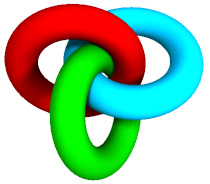When people hear that I am in D-Studio, they often ask, “What does that entail?” “What is design thinking?” And in all honesty, I am continually finding new elements to add to my response each week. From the process we experienced in class with regards to the upcoming Sauder re-opening, my group and I added on to the design thinking process. We added a “share” component at end of the “ask”, “try”, “do”, process, in order to include the collaborative aspect that we believe design thinking entails.
This idea of “share” falls very much in line with Schon’s analysis of “Design as a Reflective Conversation”. However, upon considering the numerous projects we have taken on in D-Studio, in addition to my experience in other areas, I have begun to formulate a new idea of the design thinking process. In order to truly understand how design thinking differs from the typical way of thought, we must first have a common understanding of the traditional way of tackling a business problem. Typically, one identifies a problem, considers the objectives, considers the constraints, and looks for a solution. In relation to the design thinking process, the elements of “ask” and “do” are evident. Although not explicitly stated, there must also be a period of “trial” (try) unless the solution is evident. However, I believe that in the design thinking process, this “try” period can lead to new ideas and objectives that may have not been previously defined. Idea generation can sprout from one particular train of thought, yet can expose new and fresh opportunities. I have found it hard to “buy into” the “Ask, Try, Do” process for two primary reasons:
1) These three simple steps do not address the additional possibilites that design thinking often spurs
2) Ask, Try, Do are elements that are arguably the fundamental pieces for traditional thinking, meaning that there is no difference between the two processes
How would I alter the process? I do not think that design thinking can truly be summarized in a flow chart or process cycle. As can be seen in the reading, design is largely a function of personal/collaborative reflection, meaning that design is highly dependent on the individuals in the process. I believe that we all run through stages of “Ask, Try, Do,” however, not necessary at the same time. The beauty of teamwork is having the ability to “ask” while someone is “trying”, or “try” what someone is “doing”. Being at the same stage of the process at all times is to say we are all approaching the problem in the same way; we are hindering new ideas and new ways of thought to be discovered.
Consider the image below as 3 people continually circulating in the design process, linked, but finding points of intersection at various moments.

Hi Joyce,
I agree that the Ask Try Do model is a bit too simple for the rather complex/random/creative process of design thinking. I would say that another reason is that doesn’t really imply the circular nature of design thinking that we’ve talking about so much, nor does it leave room to return to a previous step. Working in teams is a whole other game because you’ve got several people at different stages of the design thinking, as you mentioned. It’s really cool how one person can be doing while the other person is asking. It does make things challenging but that’s where a team with effective communication can succeed and a team without, well, will have some issues.
Excellent read, I just passed this onto a friend who was doing some research on that. And he just bought me lunch since I found it for him smile Therefore let me rephrase that: Thanks for lunch!
Good info! Keep it flowing… 🙂
Lovely blog! I am loving it!! Will be back later to read some more. I am taking your feeds also
I rarely drop comments, however i did some searching and wound up here Reflection 3: The Design Cycle Deconstructed | d.studio. And I do have a couple of questions for you if it’s allright. Could it be just me or does it give the impression like a few of these comments appear as if they are left by brain dead visitors? 😛 And, if you are posting at other online social sites, I would like to follow everything new you have to post. Could you list of all of your public sites like your linkedin profile, Facebook page or twitter feed?